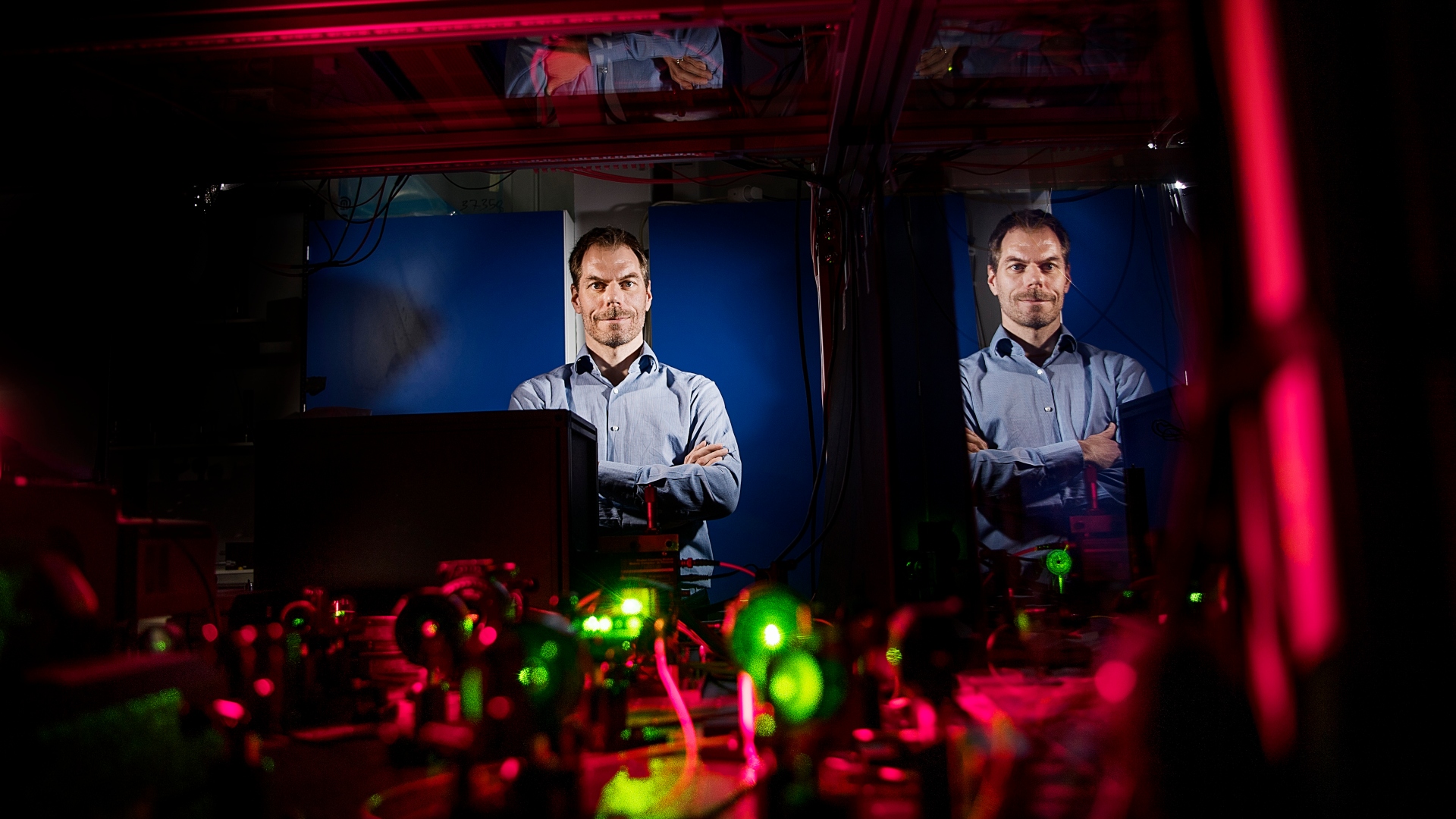The technological race to exploit quantum physics is raging, and in Denmark the development is gaining further momentum when DTU’s cleanroom in the autumn is expected to open its doors to the first projects in a new NATO test and fabrication facility. Projects focusing on the development of quantum computers and quantum encryption will be given high priority, according to Professor Ulrik Lund Andersen at DTU.
“Quantum technology for secure communication or for decoding communications has great military strategic importance. Today, you cannot read the encrypted information, but if you store it, and later break the code using a quantum computer—expected to be developed within the next decade—you can read the communication. We therefore already now need to protect critical data with encryption keys based on quantum technology,” says Ulrik Lund Andersen.
He is working with colleagues on an application for the new NATO test centre, where he will establish a start-up company to further develop a membrane invented at DTU Physics. The membrane acts as a sensor for measuring pressure and temperature, but it can also enable transferring quantum information between, for example, optical and electronic signals, which is crucial for developing a quantum network.
New-generation quantum technology
The development of quantum technology stands on the shoulders of previously so-called first-generation quantum technologies such as the transistor, the laser, and atomic clocks which are essential for our modern society. Since the first generation of quantum technologies, science has gained full control over the basic building blocks of quantum technology, and researchers are now able to create a whole new generation of quantum technologies.
Quantum mechanics will make your head spin as will trying to fathom the physical phenomenon of superposition: That objects—atoms, photons, protons—can assume two or more different states simultaneously. But it is principles like this that enable researchers to develop quantum technology and, for example, store information in entangled quantum mechanical states.
The researchers exploit the fact that particles such as atoms, light in the form of photons, or electrically charged protons, appear in quantum states as superposition and entanglement—that two spatially separated objects are quantum mechanically connected as one unit. These are the states that researchers today are able to exploit for storing data and getting a quantum processor to perform calculations at a pace that in some cases is several million times faster than even the most powerful supercomputer.
In addition to security policy perspectives in quantum communication, quantum computers are important for accelerating the development of new medicine, machine learning for technologies for diagnosing diseases, and for achieving many of the UN’s Sustainable Development Goals. Research in this area takes place not only at universities and internationally leading research institutions such as DTU and Niels Bohr Institute, but also in companies such as Google, Intel, IBM, and Toshiba.
Quantum keys
Ulrik Lund Andersen explains that research today has documented that a quantum computer can solve specific tasks, but that there is not yet a universal, error-corrected quantum computer that can solve all the tasks it is asked to perform.
However, there is already a need to strengthen data security, and therefore research is being conducted into using quantum mechanics to encrypt data transfers. Specifically, in the development of so-called quantum key distribution, where the superposition principle is used to create and distribute encryption keys between two parties, which can then safeguard their communication. Here, quantum physics makes it possible to achieve the highest degree of information security, and a hacker will be exposed already when the encryption keys are distributed—and thus before any data is sent.
“We can see if someone has been ‘on the line’, and if so, we’re not sending the encrypted information. And conversely, you can see if no hacker has been on the line—and then the communication is 100 per cent secure,” says Ulrik Lund Andersen.
Data transfer based on Q-bits
Denmark has an internationally recognized position of strength in the quantum field, where DTU Physics as recently as February 2022 carried out the Nordic region’s first quantum-secured data transfer in collaboration with Danske Bank and KPMG. The project was based on continuous variable quantum key distribution (CV-QKD). The technology has been developed at DTU and enables creating and sharing secure encryption keys using standard telecom fibre optics, similar to the fibre network used for internet connections.
“We have advanced the technology so far that we could actually commercialize it. There is no doubt that the market is coming, but the price for the technology is still too high and the hardware physically takes up too much space. But if we can get it compressed to fit into more products, then the technology is relevant for a larger market, and by producing in larger quantities, the per-unit price will decrease. And the task of getting the technology down on chips is definitely something we can manage in the new NATO centre at DTU,” says Ulrik Lund Andersen.
This is where the cleanroom at DTU Nanolab is necessary.
“We use large systems and components to develop the technology behind quantum keys, which is currently not possible on a chip scale. But in order to sell it, everything has to be made infinitely smaller while being inexpensive. And we do that by getting it all—our laser, modulators, and all the other components, brought down on one chip. The necessary technology is available in the cleanroom and can take us one step further towards a commercial version of quantum-secure communication,” says Ulrik Lund Andersen.
